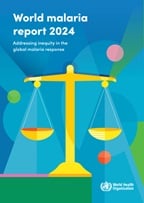/in-page-highlights/malaria-health-topic.tmb-479v.jpg?sfvrsn=96ff861e_10)
A woman walks with her child in the village of Kingombe, near Kalemie, in the Democratic Republic of the Congo.
Malaria
Technical links
Malaria surveillance is the continuous and systematic collection, analysis and interpretation of malaria-related data, and the use of that data in the planning, implementation and evaluation of public health practice. Improved surveillance of malaria cases and deaths helps ministries of health determine which areas or population groups are most affected and enables countries to monitor changing disease patterns. Strong malaria surveillance systems also help countries design effective health interventions and evaluate the impact of their malaria control programmes.
The WHO Guidelines for malaria bring together all current WHO recommendations on malaria in one easy-to-navigate web-based platform. They are a living resource that will be updated periodically as new evidence becomes available. The Guidelines are available in Arabic, English, French and Spanish.

Each year, the World malaria report serves as a vital tool to assess global progress and gaps in the fight against malaria. This year’s report provides...
This manual provides structured guidance on subnational tailoring (SNT) of malaria interventions and strategies, supporting countries to use local data...
This manual provides comprehensive guidance on making malaria surveillance a core intervention across all transmission settings. It positions surveillance...
By 2050, nearly 7 out of 10 people globally will live in cities and other urban settings. While urbanization, overall, is expected to reduce malaria transmission,...
This Malaria Surveillance Assessment Toolkit implementation reference guide is a comprehensive reference document, as well as a step by-step guide. It...
New data from the World malaria report 2018 shows that progress in the global malaria response has levelled off and, in some countries, the disease...
Technical links